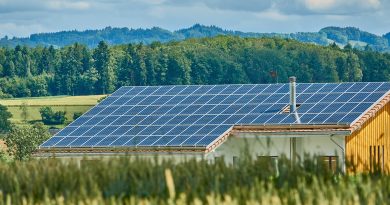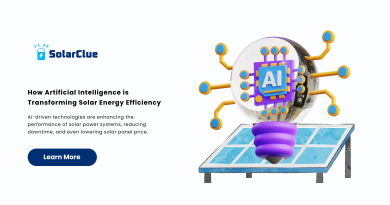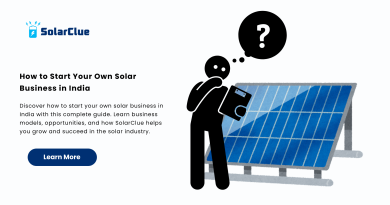Do Solar Panels Work On Photoelectric Effect?
Solar panels are a cornerstone of modern renewable energy, converting sunlight into electricity to power homes, businesses, and even entire cities. This transformation is rooted in the photoelectric effect, a fundamental principle of physics that enables the photovoltaic effect in solar panels. This blog post explores how solar panels harness the photoelectric effect, the role of semiconductors, photons, and electrons, and the broader implications of this technology for our energy future.
Table of Contents
- 0.1 The Photovoltaic Effect and Its Basic Principles
- 0.2 The Role of Semiconductors in Solar Panels
- 0.3 The Conversion of Sunlight into Electricity
- 0.4 The Impact of Photon Energy on Solar Panel Efficiency
- 0.5 The Limitations and Challenges of the Photovoltaic Effect
- 0.6 The Future of Solar Technology and Potential Advancements
- 0.7 Comparing Solar Panels to Other Photovoltaic Applications
- 0.8 The Environmental Benefits of Solar Energy
- 0.9 Common Misconceptions About the Photovoltaic Effect and Solar Panels
- 1 Table: Key Components of a Solar Panel System
- 2 FAQs
- 3 Conclusion
The Photovoltaic Effect and Its Basic Principles
The photovoltaic effect is the process by which sunlight is converted directly into electricity. It was first observed by physicist Alexandre-Edmond Becquerel in 1839, who noticed that certain materials could produce an electric current when exposed to light. The effect is a subset of the broader photoelectric effect, which involves the emission of electrons from a material when it absorbs photons (light particles).
In the context of solar panels, the photovoltaic effect occurs within a semiconductor material, typically silicon. When sunlight strikes the semiconductor, it excites electrons, creating an electric current that can be harnessed for power.
The Role of Semiconductors in Solar Panels
Semiconductors are materials with electrical conductivity between that of conductors (like metals) and insulators (like glass). Silicon is the most commonly used semiconductor in solar panels due to its abundant availability and favorable electronic properties.
Solar panels consist of multiple layers of semiconductor material, typically doped to create two different regions: the n-type (negative) and p-type (positive). The junction between these two regions is known as the p-n junction. When sunlight strikes the panel, photons excite electrons in the semiconductor, causing them to move across the p-n junction, creating a flow of electric current.
The Conversion of Sunlight into Electricity
The process of converting sunlight into electricity in a solar panel can be broken down into the following steps:
- Photon Absorption: When sunlight (composed of photons) hits the solar panel, the energy from these photons is absorbed by the semiconductor material.
- Electron Excitation: The absorbed energy excites electrons in the semiconductor, causing them to break free from their atomic bonds.
- Electric Current Generation: The excited electrons move across the p-n junction, creating a flow of electric current. This current is then collected by metal contacts on the surface of the solar panel.
- Power Conversion: The direct current (DC) generated by the solar panel is typically converted into alternating current (AC) by an inverter, making it usable for powering homes and businesses.
The Impact of Photon Energy on Solar Panel Efficiency
Not all photons have the same amount of energy. The energy of a photon is directly related to its wavelength, with shorter wavelengths (like blue light) having more energy than longer wavelengths (like red light). The efficiency of a solar panel depends on how effectively it can convert this photon energy into electricity.
Higher energy photons can excite more electrons, potentially leading to higher electricity generation. However, if the photon energy is too high, it can be lost as heat rather than being converted into electricity. Conversely, if the photon energy is too low, it may not be sufficient to excite an electron, leading to a loss in potential energy production.
The Limitations and Challenges of the Photovoltaic Effect
While the photovoltaic effect is a powerful tool for generating renewable energy, it has its limitations:
- Efficiency: Current solar panel technologies convert only a fraction of the sunlight they receive into electricity, typically around 15-22%. The rest is lost as heat or reflected light.
- Material Limitations: The efficiency of the photovoltaic effect is largely determined by the properties of the semiconductor material. While silicon is the most common, other materials like cadmium telluride (CdTe) and gallium arsenide (GaAs) are also used, each with its own advantages and drawbacks.
- Temperature Sensitivity: Solar panel efficiency decreases as temperature increases, which is a significant challenge in hot climates.
The Future of Solar Technology and Potential Advancements
Research and development in solar technology are focused on overcoming these limitations. Some promising areas include:
- Perovskite Solar Cells: These have shown potential for higher efficiency and lower production costs compared to traditional silicon-based cells.
- Tandem Cells: Combining multiple layers of different semiconductor materials to capture a broader spectrum of sunlight, potentially leading to higher efficiencies.
- Bifacial Solar Panels: These capture sunlight from both sides, increasing energy production, especially in environments with high albedo (reflectivity).
- Flexible Solar Panels: Made from thin-film technology, these panels can be integrated into various surfaces, expanding their application beyond traditional rooftops.
Comparing Solar Panels to Other Photovoltaic Applications
Solar panels are just one application of the photovoltaic effect. Other applications include:
- Solar-Powered Calculators: These use small photovoltaic cells to power electronic devices without batteries.
- Photovoltaic Water Heaters: These use the photovoltaic effect to generate electricity that heats water.
- Building-Integrated Photovoltaics (BIPV): These are integrated into building materials like windows and facades, providing both energy generation and aesthetic appeal.
The Environmental Benefits of Solar Energy
Solar energy offers numerous environmental benefits:
- Reduced Greenhouse Gas Emissions: Solar panels generate electricity without burning fossil fuels, reducing carbon dioxide emissions and other greenhouse gases.
- Sustainable Energy Source: Solar power is renewable and abundant, unlike finite fossil fuels.
- Minimal Water Usage: Solar panels require very little water for operation, unlike conventional power plants that use significant amounts of water for cooling.
Common Misconceptions About the Photovoltaic Effect and Solar Panels
- Myth: Solar Panels Work Only in Direct Sunlight: Solar panels can generate electricity even on cloudy days, although their efficiency is reduced.
- Myth: Solar Panels Require a Lot of Maintenance: Solar panels are relatively low-maintenance, requiring only occasional cleaning and inspections.
- Myth: Solar Panels Are Inefficient: While not 100% efficient, advancements in technology continue to improve the efficiency and affordability of solar panels.
Table: Key Components of a Solar Panel System
| Component | Function |
|---|---|
| Photovoltaic Cells | Convert sunlight into electricity using the photovoltaic effect. |
| Inverter | Converts DC electricity from the panels into AC electricity for household use. |
| Mounting System | Secures solar panels to roofs or other structures. |
| Battery (Optional) | Stores excess electricity for use when sunlight is not available. |
| Charge Controller (Optional) | Regulates the voltage and current from the panels to the battery. |
FAQs
Q1: What is the photoelectric effect?
The photoelectric effect is the phenomenon where electrons are emitted from a material when it absorbs light. In solar panels, this principle is harnessed to generate electricity.
Q2: How do solar panels convert sunlight into electricity?
Solar panels use the photovoltaic effect, where photons from sunlight excite electrons in a semiconductor, creating an electric current that can be used as electricity.
Q3: Why is silicon commonly used in solar panels?
Silicon is widely used because of its ideal electronic properties, abundance, and cost-effectiveness, making it a reliable choice for semiconductor material in solar panels.
Q4: Can solar panels work on cloudy days?
Yes, solar panels can generate electricity on cloudy days, though their efficiency is lower compared to sunny days.
Q5: What are the future advancements in solar technology?
Future advancements include perovskite solar cells, tandem cells, bifacial panels, and flexible solar panels, all aimed at increasing efficiency and reducing costs.
Q6: How do solar panels benefit the environment?
Solar panels reduce greenhouse gas emissions, provide a sustainable energy source, and require minimal water, making them an environmentally friendly energy option.
Q7: Are solar panels difficult to maintain?
No, solar panels are generally low-maintenance, requiring only occasional cleaning and periodic inspections to ensure optimal performance.
Conclusion
The relationship between solar panels and the photoelectric effect is a remarkable example of how fundamental physics can be harnessed to create practical, sustainable solutions to global energy challenges. As technology advances, solar panels will continue to play a crucial role in reducing our reliance on fossil fuels and mitigating climate change. By understanding the principles behind this technology, we can better appreciate its impact and potential for the future.



